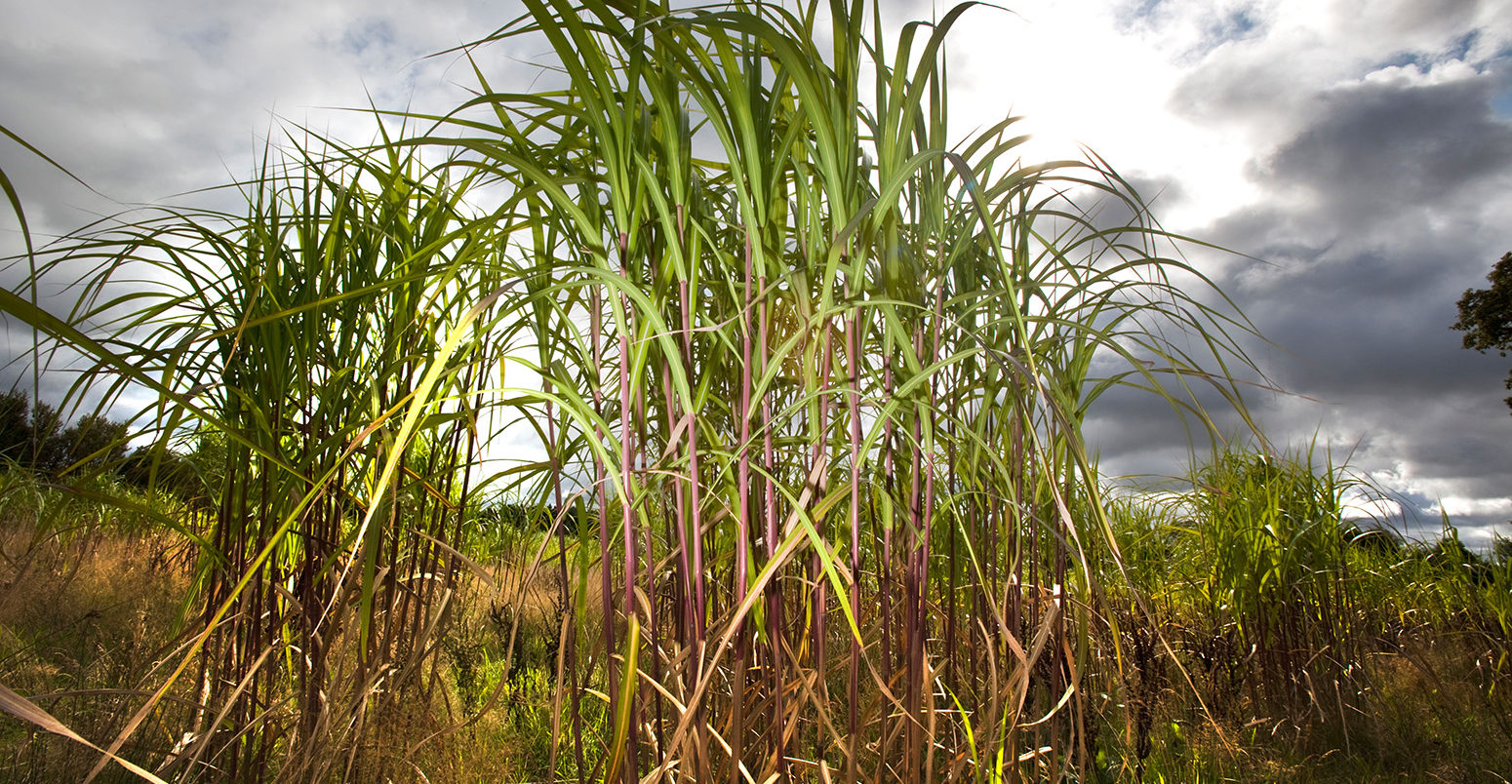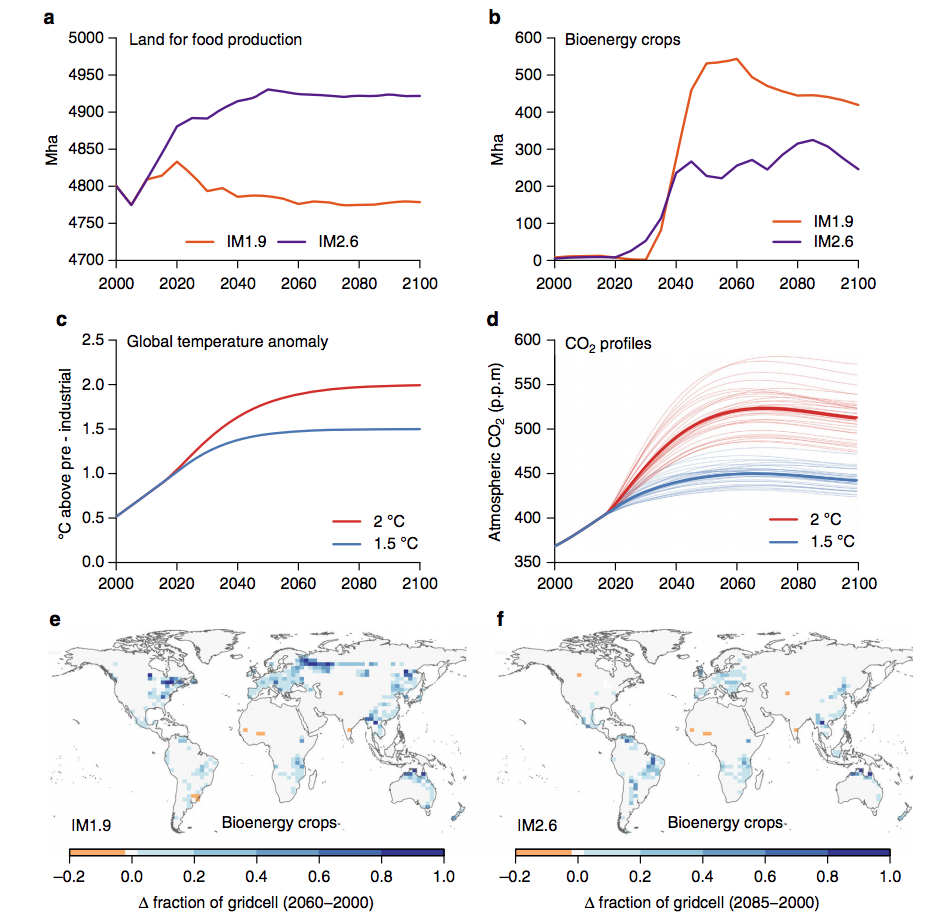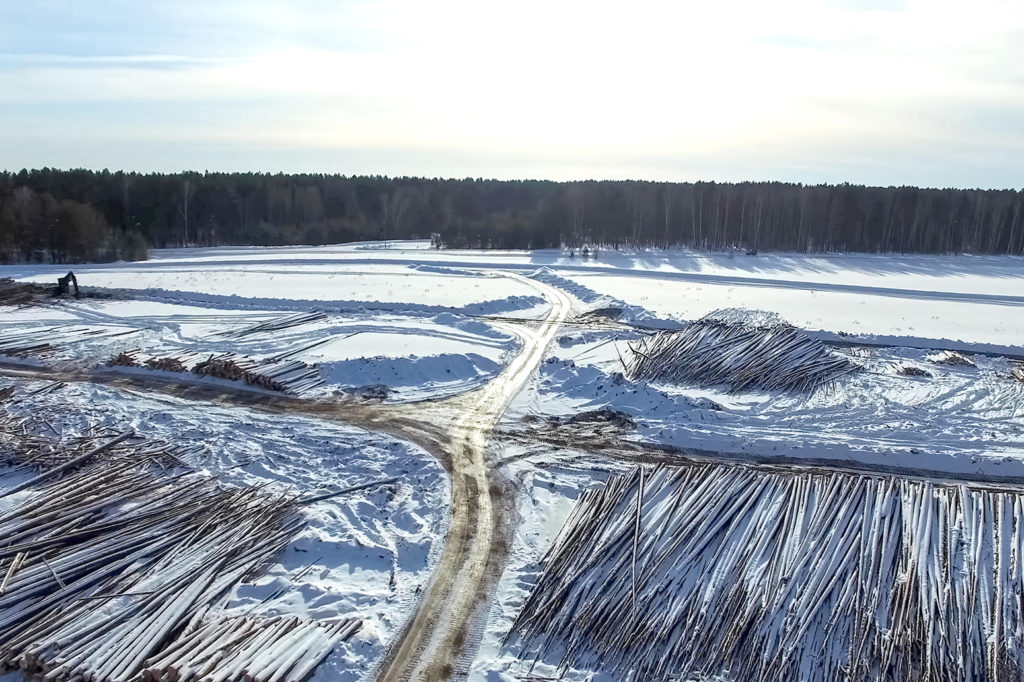
Guest post: Why BECCS might not produce ‘negative’ emissions after all

Dr Anna Harper
08.14.18
Dr Anna Harper
14.08.2018 | 11:59amDr Anna Harper is a research fellow and lecturer in climate science in the College of Engineering, Mathematics and Physical Sciences at the University of Exeter.
With the long-term goal of restricting global temperature rise to “well below 2C” or 1.5C above pre-industrial levels now enshrined in the Paris Agreement, attention has increasingly turned to how these limits could be met.
Model scenarios that limit warming to 1.5C or 2C typically rely on large amounts of “negative emissions” to extract CO2 from the atmosphere and store it on land, underground or in the oceans.
Bioenergy crops with carbon capture and storage (BECCS) is, perhaps, the most prominent of the various negative emissions techniques. There are many attractive features, since this technology would provide energy – thus reducing our need for fossil fuels – and remove CO2 from the atmosphere at the same time.
However, the full carbon-cycle impacts of large-scale deployment of BECCS are not well studied. And, before now, no studies have looked at these impacts specifically for a scenario that could meet the 1.5C target.
In our new study, published in Nature Communications, my colleagues and I find that expansion of bioenergy in order to meet the 1.5C limit could cause net losses in carbon from the land surface. Instead, we find that protecting and expanding forests could be more effective options for meeting the Paris Agreement.
Forests compared to BECCS
Most people know that forests have many benefits, ranging from high biodiversity to improved soil and water quality compared to agricultural land. Tree-planting programmes, where carbon in new trees is tracked and sold for carbon credits, are already providing additional income for farmers.
Afforestation (growing new forests) and reforestation (restoring existing forests), combined with a variety of land management and conservation practices, could remove around 1-2bn tonnes of carbon from the atmosphere per year. It is also important to note, though, the potential warming effect of forests as well – in high-latitude areas, adding trees can warm the climate since their albedo is lower than snowy ground or agricultural land.
In comparison, bioenergy crops, when grown sustainably, could also provide multiple benefits. Some studies have found increased biodiversity and soil carbon when growing the biofuel miscanthus. And they have the potential to remove large amounts of carbon each year, particularly compared to forests since their carbon uptake capacity saturates as trees reach maturity.
In Intergovernmental Panel on Climate Change (IPCC) scenarios that are consistent with 2C warming, BECCS is assumed to remove an average of 3.3bn tonnes of carbon per year by 2100.
But what if, overall, BECCS does not actually remove as much CO2 from the atmosphere as it emits?
Land for food
Before answering that question, it is worth mentioning that a constraint on using land for climate mitigation is our need to grow food.
In our study, we examine scenarios produced by the IMAGE integrated assessment model of different ways society could meet the 1.5C and 2C limits. You can see how these scenarios are projected to pan out over the course of the 21st century in the charts and maps below.

Series of charts illustrating comparisons between 1.5C and 2C scenarios for a) land for food production (IM1.9 is the scenario for 1.5C, and IM2.6 is the scenario for 2C); b) land for bioenergy crops; c) global temperatures and d) atmospheric CO2. Maps show spatial patterns of land committed to bioenergy crops in 1.5C scenario in 2060-2100 (left) and 2C in 2085-2100 (right). Shading shows increases (blue) and decreases (yellow) in biofuel crops. Source: Harper et al. (2018)
![]()
In the IMAGE model, food production primarily drives global land use, with the amount of land needed dependent on other factors, such as population dynamics, dietary trends and barriers to trade. The chart in the top left shows how much land is projected to be needed for growing food under the two scenarios.
For 1.5C, global agricultural land – consisting of crops and pasture – stays relatively constant around 4,750m hectares. Whereas for 2C, agricultural land increases by around 150m hectares over the next 30 years before levelling off again.
As less land is committed for farming in the 1.5C scenario – because, for example, it assumes less demand for meat and dairy – there is more land left for growing biofuels than in the 2C scenario (top right chart).
However, to meet the stringent demands of the 1.5C limit, even more land would be needed for BECCS. For this reason, the IMAGE model projects removing some forest areas in the high latitudes in favour of producing highly productive bioenergy crops. You can see this from the dark blue shading in the maps above – these are areas where a considerable expansion of biofuels is projected.
The importance of land-use change emissions
Removing trees to plant biofuels as a way of mitigating climate change clearly seems counterintuitive. So we looked more closely at the effectiveness of the land-use patterns in the two scenarios.
We used a land-surface computer model that calculates the carbon stored in plants and soils, taking into account changes in climate, land use (natural vs agricultural) and the amount of CO2 in the atmosphere.
We ran the model with several climate change scenarios that reach either 1.5C or 2C warming by 2100. This is illustrated in the middle two charts in the earlier figure, which show how global temperature and levels of CO2 in the atmosphere change in our idealised scenarios to meet the 1.5C (blue line) or 2C (red) limits.
We then calculated the mitigation potential of BECCS by adding up the annual biomass harvested from bioenergy crops and assuming some carbon is lost during the BECCS life cycle (from field all the way through to injection of CO2 underground). And finally, we compared this to the carbon stored naturally in forests and soils that would have been replaced by biofuels.
Overall, we found that in a majority of the areas where forests would be replaced, more carbon was stored by keeping the forests than with employing BECCS. That was a surprising finding, since the IMAGE model that created the scenarios clearly found it worthwhile to put bioenergy crops in those places.
There are two reasons for this result, each with implications for how we use the land to mitigate climate change.
First, our modelled bioenergy crop produced around 10 tonnes per hectare (a similar yield to maize), whereas IMAGE implemented a model version of miscanthus, which by 2100 produced average yields of nearly 16 tonnes per hectare, thanks to increased productivity over time.
This means, if we are going to invest in BECCS, we clearly need very productive crops and to continue innovations to increase crop production.
Second, accounting for land-use change emissions is critical. Forests accumulate and store carbon in vegetation and soils and this is lost when forests are converted to crops.
We found that this had a very big impact on the net carbon balance of land converted from forest to bioenergy crops. In high latitudes, for example, significant losses of soil carbon meant the “payback” time for the carbon lost in replacing forests with BECCS could be more than 100 years. This means we also need to carefully consider where BECCS is implemented.
Ultimately, this makes it very difficult for BECCS to “pay off” the initial carbon debt due to deforestation, and makes afforestation and reforestation much more attractive options.
Ambition
These findings underscore the importance of things that scientists and policymakers might take for granted.
To meet the ambitions of the Paris Agreement we need innovations for producing more food and biomass on our limited land, for using land more efficiently and sustainably (reducing waste, changing diet, integrated management), and to assess fully the value of protecting the naturally stored carbon we already have in the world’s forests and soils.
There is work for the individual, too, as lifestyle changes, such as less CO2 intensive transport and a diet less reliant on meat and dairy, could decrease the need for negative emissions by three or four times. And, of course, fossil fuel emissions will need to be reduced dramatically to zero by mid-century in most scenarios consistent with 1.5C.
Harper, A. B. et al. (2018) Land-use emissions play a critical role in land-based mitigation for Paris climate targets, Nature Communications, doi:10.1038/s41467-018-05340-z
-
Guest post: Why BECCS might not produce ‘negative’ emissions after all
-
Guest post: Land-use change could cancel out BECCS ‘negative’ emissions


